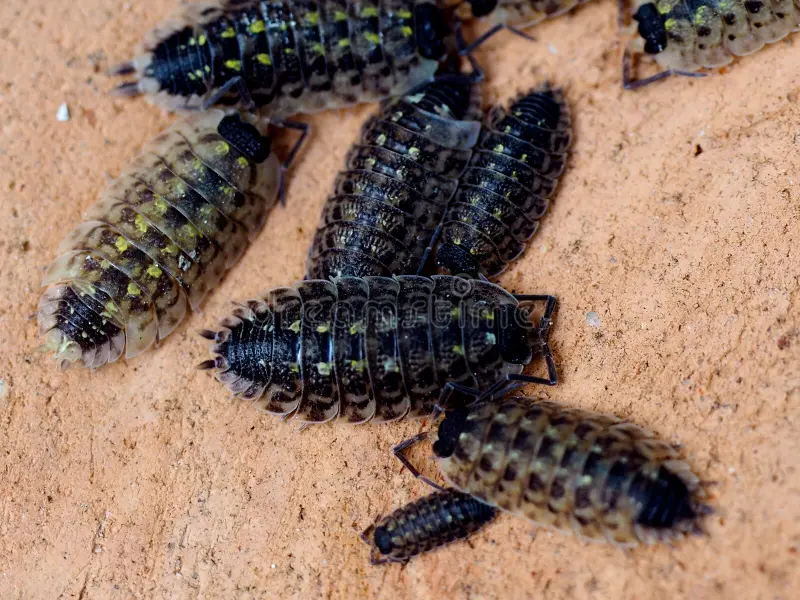A “doodlebug” is a term that commonly refers to the larvae of a type of antlion, a fascinating insect known for its unique hunting technique. These creatures are not just curious insects; they play a significant role in our ecosystems and offer intriguing insights into the natural world.
Brief History and Cultural Significance
Doodlebugs have captured the interest of children and adults alike, often associated with fun stories and playful images. Historically, they have appeared in various cultures, representing curiosity and exploration.
Importance of Understanding Doodle Bugs
Learning about doodle bugs helps us appreciate the diversity of life and the interconnectedness of ecosystems. Understanding their behavior and role can foster a deeper respect for nature.
What are Doodle Bugs?
Scientific Classification and Taxonomy
Doodlebugs belong to the family Myrmeleontidae and are the larval stage of antlions. There are over 2,000 species of antlions worldwide, primarily found in sandy or loose soil habitats.
Physical Characteristics
Doodlebugs are typically small, measuring around 1 to 2 inches in length. They have elongated bodies, large mandibles, and a unique, flattened shape that helps them burrow into the ground. Their coloration usually ranges from beige to light brown, allowing them to blend in with their sandy surroundings.
The Life Cycle of Doodle Bugs
Stages of Development
- Eggs: Adult female antlions lay eggs in sandy soil, often in clusters.
- Larvae (Doodlebug stage): Once hatched, the larvae emerge and begin their predatory lifestyle. This stage can last several months to a year, depending on environmental conditions.
- Pupation: After growing and molting several times, the doodlebug forms a pupal case, where it undergoes metamorphosis.
- Adult stage: The adult antlion emerges from the pupal case, often resembling a dragonfly, and the cycle begins anew.
Duration of Each Stage and Factors Affecting Growth
The duration of each life stage is influenced by factors such as temperature, humidity, and food availability. Optimal conditions can speed up their life cycle, while harsh conditions may prolong it.
Behavior and Habitat
Preferred Environments
Doodle bugs thrive in sandy or loose soils found in gardens, beaches, and deserts. They prefer warm, dry climates, which provide the right conditions for their development and hunting.
Doodle Bug Behavior
- Hunting and Feeding Habits: Doodle bugs are ambush predators. They dig conical pits in the sand and wait for unsuspecting insects to fall in, where they quickly capture and consume their prey.
- Burrowing Techniques: Their flattened bodies allow them to dig efficiently, using their powerful mandibles to move soil aside as they create their traps.
Doodle Bugs in Nature
Role in the Ecosystem
Doodlebugs serve as important predators, helping to control populations of smaller insects. Their presence contributes to the balance of ecosystems, particularly in sandy habitats.
- Predators and Prey: They primarily feed on ants and other small insects, while they can fall prey to birds and larger insects.
- Impact on Soil Health and Biodiversity: By aerating the soil as they dig, doodle bugs help promote healthier soil ecosystems.
Interaction with Other Species
- Symbiotic Relationships: Doodle bugs play a role in the food web, supporting various predators in their environment.
- Competition and Coexistence: They compete with other insect predators for food but have adapted well to their niche.
Cultural References and Fun Facts
Doodle Bugs in Popular Culture
Doodlebugs have made appearances in literature, art, and children’s stories, often depicted as whimsical creatures. Their unique behavior and form inspire curiosity and creativity in storytelling.
Unique Facts and Trivia about Doodle Bugs
- Mythology and Folklore: Some cultures view doodle bugs as symbols of patience due to their stealthy hunting methods.
- Fun Activities Involving Doodle Bugs: Children often enjoy observing these insects in their natural habitats, making them popular subjects for nature exploration.
How to Attract and Observe Doodle Bugs
Creating a Suitable Habitat
To attract doodle bugs to your garden, you can create a loose, sandy area where they can thrive. Ensure the environment is dry and sunny, which suits their natural preferences.
Tips for Observation and Study
- Be Patient: Observe quietly, as doodle bugs can be shy and will quickly burrow if disturbed.
- Use a Magnifying Glass: This can enhance your viewing experience, allowing you to see the intricate details of these fascinating creatures.
Safety Precautions for Enthusiasts
While doodle bugs are harmless, it’s essential to respect their habitat and avoid disturbing their environments excessively.
Conclusion
Recap of the Significance of Doodle Bugs
Doodlebugs are not just interesting insects; they play a crucial role in their ecosystems. Understanding them helps foster a greater appreciation for the intricate web of life around us.
Encouragement to Learn More and Engage with Nature
Exploring the world of doodle bugs can lead to a deeper connection with nature and inspire curiosity in both children and adults.
Invitation for Readers to Share Their Experiences with Doodle Bugs
Have you ever encountered a doodle bug? Share your experiences and observations, and let’s continue to learn about these amazing creatures together!
Additional Resources
Recommended Books and Websites for Further Reading
- “The Secret Life of Antlions” – A detailed guide on antlions and their life cycles.
- Websites like National Geographic and BugGuide for more information on insects.
Educational Programs or Events Related to Doodle Bugs
Check local nature centers or museums for programs that focus on insect life and ecology, providing opportunities to learn and observe doodle bugs firsthand.

